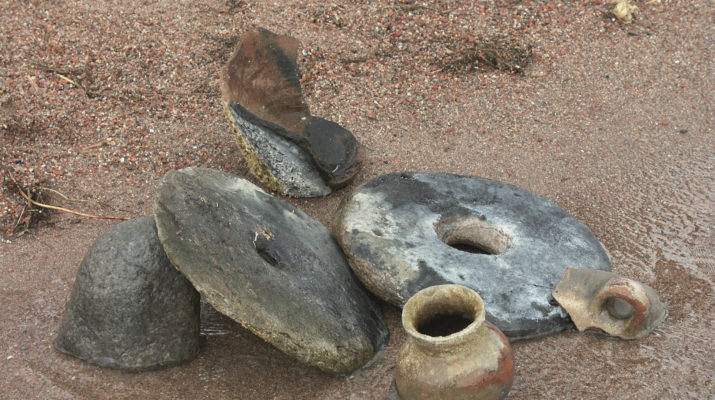The work “Zain Al-Akhbar” (A Beauty of Narration) by Abu Said ibn Mahmud Gardizi, the medieval historian of the Persian and Arab world, describes cities on the southern shore of Issyk-Kul, part of which were later underwater. The toponymy of the cities of Yar, Ton, and Barshan remains to this day. Gardizi also describes a legend about the founding of Barshan city by Alexander the Great.
The great conqueror, having subjugated the Persian Empire in 329-324 BC, took nobles hostage in order to avert possible mutinies. Before his campaign in India, he left them on the shore of Issyk-Kul in order to be unburdened on his way. Having lost hope in returning home, sons of Persian lords built a town called Barshan. Part of the town later was under water, and the rest remained at the plateau of the shore.
The name has been preserved until today and is known in Kyrgyz as Barskoon. On the shore and underwater we have discovered household items, tools and weapons of the Saki era (the second part of the millennium BC). This area has potential for archaeological work both on the shore and underwater.
* * *
One more written legend remains which is connected with the tribe of another great conqueror: Timur.
At the beginning of the fifteenth century, the well-known Arab geographer Ahmed ibn Arabshah wrote of Timur’s “little dwelling” at Issyk-Kul where he rested after constant wars. There he sent captives and dignitaries who had fallen into disgrace.
The Turkish historian Muhammed Haydar (sixteenth century), describing Issyk-Kul, wrote about a fortress on the shore in the Koysu area. Many legends tell of castles on the shore where Timur kept his beautiful hostages.
Our mentor and predecessor in underwater research, Dmitry Vinnik, found underwater in the modern village of Baetovo the remains of reinforced walls from burnt brick and archaeological artefacts of the Timurid era (the end of the fourteenth and beginning of the fifteenth centuries). Serious scientific research of the ancient settlement remains to be done.
According to local legend, the treasures of Chingiz Khan are preserved in the Kurmenty area of Issyk-Kul, in a cave or inside the walls of a sunken monastery. Repeated attempts to find them were unsuccessful.

